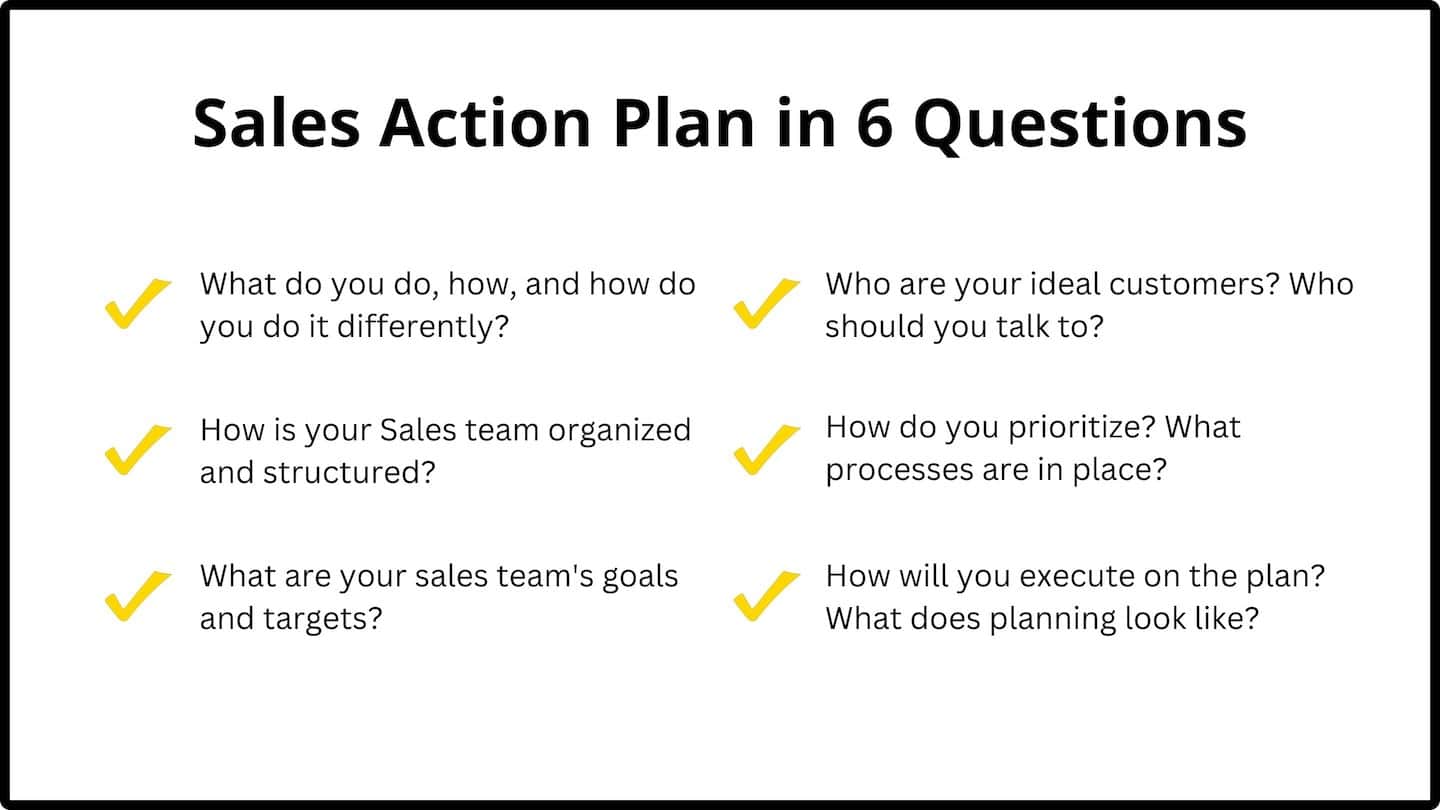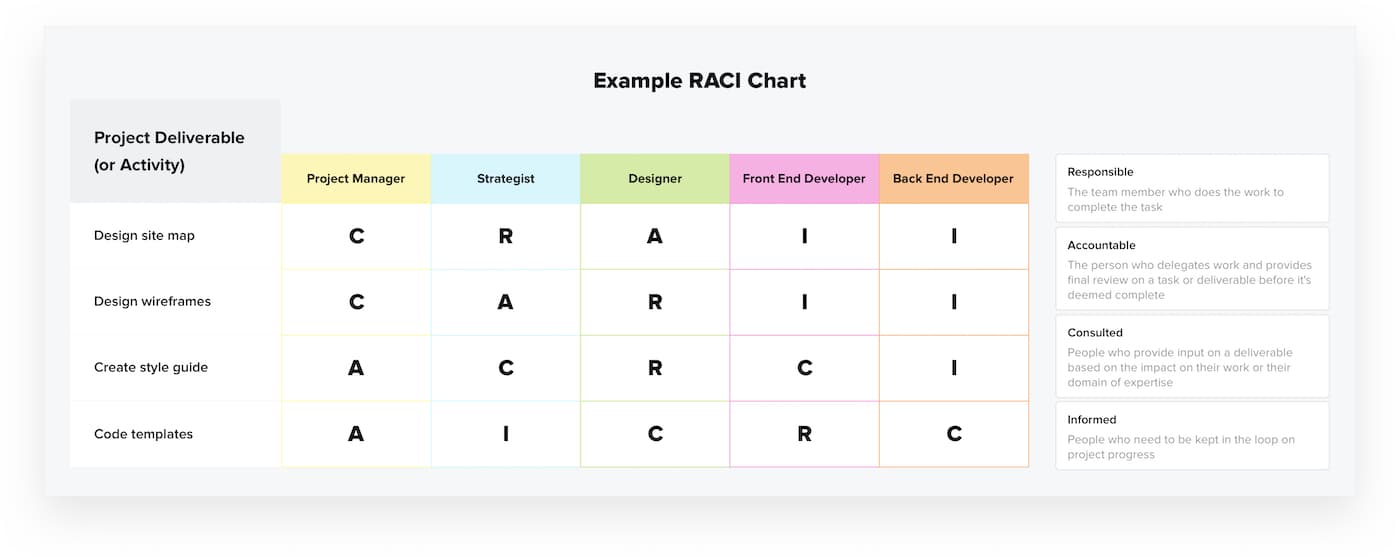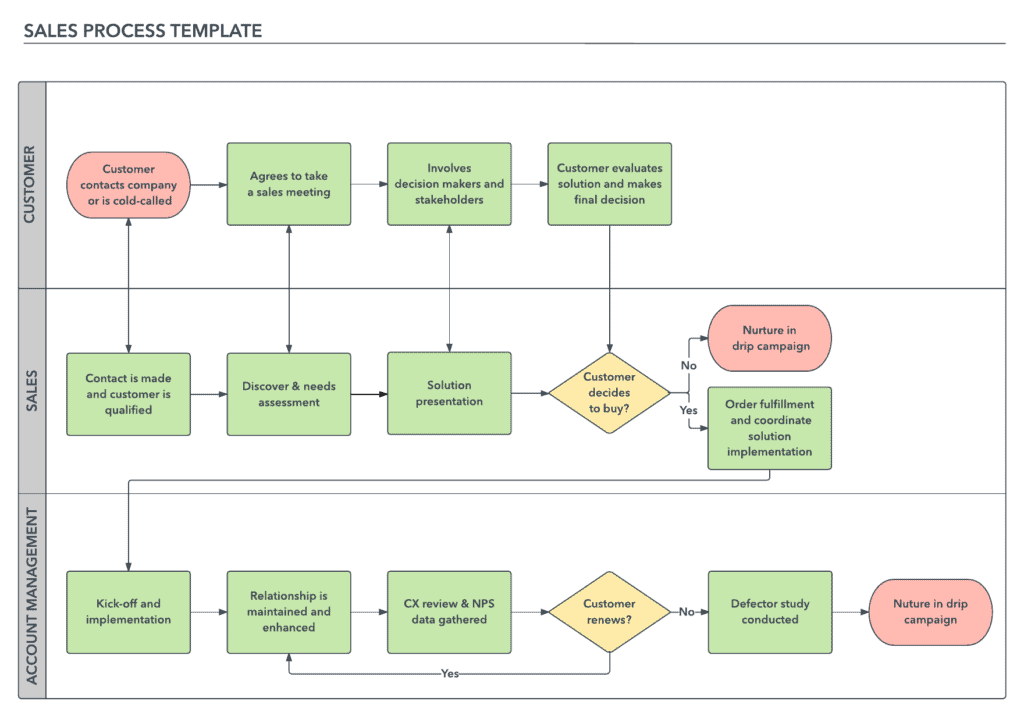A sales action plan allows you to formalise all the sales strategy and methods that work for your organisation. It is useful for aligning your teams towards the same objectives, homogenising your processes and improving your performance, and better anticipating new recruitment & tools.
This article explains what a sales action plan is, why it is important to create one and how to create a sales action plan
Sommaire
What is a sales action plan?
Your business action plan is a roadmap of how you will achieve your revenue goals, who your target market is, the activities needed to achieve your goals and the obstacles you will have to overcome along the way.

An effective Sales Action Plan should communicate the following information:
- #1 Mission and positioning of the company: Why does your company exist and what is your position in the market?
- #2 Sales Organization Structure: What will your sales team look like? What expertise does it need to get results?
- #3 Goals and targets: What are your revenue goals? How will you break down these targets into quarterly and monthly quotas?
- #4 Target audience and segmentation: What are the characteristics of your target market? Which target accounts will you focus on?
- #5 Sales strategies and methodologies : How will you prioritise sales activities? What sales methodologies will you put in place?
- #6 Sales Execution Plan : How will you act on this data? When will specific projects and activities be carried out?
- #7 Measuring performance and results: What indicators and KPIs will help to evaluate the performance of your team?
Why create a sales action plan?
Most salespeople are action-driven. As they strive to get the job done by any means necessary, planning is often neglected in favour of short-term results.
Although this may help them to reach their quotas, the disadvantage is that they are unpredictable. Sales processes should be treated as a system whose steps can be optimised. A good sales action plan can keep them on track by using repeatable systems.
Your sales action plan should also highlight the tools and talents you need to adopt and cultivate. Ask yourself the following questions to determine whether your team and tools are aligned with your goals:
- Who do we need to hire to carry out each step?
- Who will be responsible for managing these teams?
- Which CRM is best suited to organise each stage?
- What additional tools are needed to help team members do their work?
- How will we measure performance and results?
In order to answer these questions accurately, you need to collect the right information and data. Your plan is likely to fail if you make assumptions about customer needs and market conditions.
Should a sales action plan be created for each function?
What period should your Sales Action Plan cover? To which functions and services should it apply? Every organisation and every function is different. When creating your sales action plan, you have two options:
- #1 Create a single plan that covers the entire sales organisation
- #2 Dedicated PACs for each function (sales development, account management, etc.)
The focus you choose will depend on your workforce and the complexity of each function. For example, if you have a large sales team, a specific sales plan is warranted.
The content will vary for each function, but the framework will remain the same. With this in mind, let’s look at the seven components of an effective sales action plan.

How to create a good sales action plan?
#1. Specify your organisation’s mission & your product
Regardless of their position or seniority, everyone in your organisation should be working towards the same goals.
This means understanding what your organisation is trying to achieve and where you are positioned in the market. To become fully familiar with the company’s positioning, follow these steps:
- #1 Collaborate with marketing: Your marketing teams live and breathe your company’s positioning.
- #2 Interview customer service teams: Customer service teams talk to your current customers every day. Interview them to find common issues and friction points.
- #3 Talk to your customers: Knowing your customers is a fundamental part of any positioning strategy. Talk directly to your current customers to find out what they like about your product or service.
- #4 Read your company’s blog: Content managers have a good understanding of customers’ needs. Check out blog posts and ebooks to familiarise yourself with customer language and common themes.
- #5 Look for mentions on the web: How are other people talking about your organisation? Look for mentions in the press, articles and news stories that mention your products and services.
This information can provide a context for how your company is currently positioned in the market. You will see what influences this information, giving you your customer’s perspective.
How to communicate the mission and positioning?
In this section of the marketing action plan, enter the following information:
- Company mission: Why your company exists and what value you are determined to bring to the market.
- Competition: Include information on direct and indirect competitors.
- Value propositions: Present the features, benefits and solutions that your product offers.
- How to design business proposals that sell?
- 7 examples of successful business proposals
#2. Define the vision & goals of your organisation
Use data on sales activity and past performance to calculate sales targets. You need to break down this data by stage of the pipeline and by activity carried out by sales people in all areas.
For example, how many coldcalling emails does it take to generate a deal? What is the average Customer Lifetime Value (CLV) of your customers? Breaking down these numbers allows you to accurately predict what it will take to reach your new revenue target.
How to communicate the vision and objectives?
Your sales action plan should clearly indicate the turnover target that everyone is striving to achieve. Break down this overall objective into more concrete objectives for each of your salespeople:
- 200 emails sent per day
- 200 cold calls per day
- 25 demonstrations per day
- 5 new sales appointments per day
- 100 follow-up emails sent per day
With this information, you can define service level agreements (SLAs) for each activity.
Activities are the specific actions that you and your salespeople can control, while sales targets are the results delivered by these activities. By setting targets for both, you can optimise each activity.
In this section of the marketing action plan you should include the following information:
- Sales targets: Break down your sales targets into several achievable goals and assign them to each sales team.
- Calculate sales targets: Use sales activity and past performance data to set quotas and metrics for each stage of the sales funnel.
- Identify the expertise needed for each activity: What qualities, skills and experience does your team need?
#3. Set the organisation & structure of the sales team
Use the targets set in the previous section to identify the people you need to recruit. For example, if the sales manager can send an average of 20 emails per day and you need to send 200 to reach your targets, you will need about ten sales people to reach your targets.
How do you communicate about your sales organisation and team structure?
This part of your business plan should justify the people you need in your team and the budget needed to hire them.
Be specific by including the following information:
- Team structure: These are the functions that make up your sales organisation. The roles of the business development and account management teams should be well defined.
- Roles and responsibilities: Include the roles you need to hire, and the tasks for which they are responsible. This will help you produce job descriptions that attract talent.
- Salary and remuneration: How will your teams be paid? Your compensation plan will play a large part in your ability to attract the best talent.
- Timing: It is difficult to recruit dozens of people at a time. Prioritise hiring according to the importance of each role.
Include information about each team member in your Sales Action Plan. Visualising each role helps everyone understand who they are hiring and who they are responsible for. Although it’s typically used more as a project management tool, RACI matrixes can be useful here (Responsibility Assignment Matrix)

In this section, include the following information:
- Team structure: This explains why each team member is needed.
- Role specifics: This will allow you to determine the number of representatives you need to carry out each activity, as well as a competitive compensation plan.
- Timeline: Establish a hiring timeline so that you have a clear idea of who you need to hire first and how often you will bring in new employees once key positions are filled.
- Sales ops: definition and best practices
- 30 Sales automation tools you need to start using

#4. Characterise your targets & customer segments
Start with the criteria for your target account. Include the following information to clearly define the companies you are trying to attract:
- Industries: What are the markets and niches you serve? Are there certain sub-segments of these industries in which you specialise?
- Headcount: How many employees do your top accounts have in their organisation?
- Funding: Have they raised one or more funds?
Gather as much information as possible about their organisational difficulties. These may be barriers to growth.
How to communicate with the target audience and customer segments?
Well-documented buyer profiles, fed by your customer knowledge, will help you guide your sales action plan. Here are the criteria to be filled in to obtain a relevant buyer profile:
- Profile: Include basic information about their role, career path and common priorities in their personal lives.
- Demographics: Add more detailed information about their age, income level and living conditions.
- Attributes: What is their personality? Are they calm or assertive? Do they handle direct communication themselves or do they have an assistant?
- Challenges: What are the obstacles this person is trying to overcome? How does this affect their work, and what is the impact on them personally?
- Goals: What are the challenges that prevent them from achieving them? Why are these goals important to them?
- How we help them: Based on this analysis, explain how your product or service helps them to overcome difficulties and achieve their goals.
Pro Tip
This information will change as your business grows. For start-ups, your target audience will change frequently as you find the right product or service for the market.
- Lead management: definition and complete guide
- Everything you need to know about lead nurturing
#5 Detail your sales methodology & processes
This part of your sales plan may be the most important. It will describe every practical aspect of your sales strategy, including
- Sales methodologies: The different practices and approaches you will adopt to shape your sales strategy.
- The stages of selling : The different steps needed to convert prospects into paying customers.
- Your sales guide: The tactics and techniques needed to guide contacts through each stage of the sales process.
Start by mapping each stage of your sales process.
Traditionally, the sales stages are divided into nine categories:
- #1 Prospecting and lead generation: Marketing must provide leads, but salespeople must supplement this volume with their own prospecting efforts.
- #2 Qualify your leads: Measure these leads against your target account criteria and buyer persona.
- #3 Reach out to new prospects: Prospecting emails and follow-up activities to guide new prospects through the sales funnel.
- #4 Make an appointment: Schedule an appointment for a demonstration, discovery call or consultation.
- #5 Needs definition: After the initial meeting, you will understand your prospect’s problems and how your product or service can solve them.
- #6 Presentation: Reveal the solution. This can take the form of a proposal, customised service packages or a face-to-face meeting.
- #7 Negotiation: This stage is devoted to overcoming any objections your prospect may have.
- #8 Winning the deal: The contract is signed and your prospect becomes a customer.
- #9 Referrals: Retention is an organisation-wide activity. Please your customers and encourage them to refer their friends and peers.
Map out your sales process to identify each step. Get together with other stakeholders to identify what needs to be done to close new business. Your sales map should look like this:

How to communicate sales strategies and methodologies?
Once you have defined your sales activities, you can research the techniques and methodologies needed to carry them out.
In summary, each step should be divided into several sections:
- Description: Explain why this stage plays an important role in developing leads and closing deals.
- Activities: Break down the tactics and techniques needed to advance opportunities in your sales pipeline.
- Stakeholders: Define who is responsible for each step and the activities involved.
Finally, use these activities and steps to build your sales manuals. This will help you structure your training plan, providing a reference point for your salespeople to draw on for advice.
- Setting up effective business processes
- 6 pillars for a successful commercial organisation
#6 Make your business plan operational
You have the “who” and the “what”. Now you need to determine “when” your sales plan will be implemented. A structured sales execution clearly communicates when milestones will be reached.
The order in which you implement your plan will also depend on your priorities. Many business organisations prefer to focus on the activity that will have the greatest impact on the bottom line.
For example, in analysing your current sales process and strategy, you may find that your current customers are a rich source of qualified leads. It would therefore make sense to prioritise account management activities that foster more of these relationships using a structured referral programme.
You should also consider how recruitment will affect the workload of the rest of your team. If you recruit too quickly, you may spend more time bringing new representatives up to speed and neglecting your existing team. This can have a significant impact on the culture and workflow.
How to communicate your sales execution plan
Break down each stage of your plan by month and quarter. Start with a rough timeline detailing approximate deadlines. This schedule should include key hires, process implementation and any one-off projects that need to be completed.
When applying this timeline to your sales plan, use the GANTT charts and tables to visualise projects and milestones.
In this section of the sales plan, include the following information:
- Key milestones: When should projects, activities and recruitment efforts be completed?
- Set strategies for short and long term goals: By setting a high level timetable, you can see clearly when you will achieve your goals.
#7 Deciding on performance indicators & calculation methods
Finally, your sales action plan should include details of how performance is measured. Describe your key sales metrics and activities, and the technology needed to track them.
Performance measures can indicate the effectiveness of your entire sales process. The measures you choose generally fall into two categories:
- #1 Primary measures serve as a guide to the “true north”. These are generally new commercial revenues generated.
- #2 Secondary measures are those that indicate how well specific areas of your sales process are performing. These include response time and average purchase value.
Each team needs its own sales dashboard to ensure that it is achieving its goals. Sales development managers will have different priorities to account managers, so it is essential that they have the tools to focus on what is important to them.

How to communicate on sales performance indicators?
Structure this part of your plan by breaking down each sales stage. In these sections, list the steps you need to take to ensure your sales pipeline is healthy.
Assign each measure to a member of your team, ensuring that they are measured against these measures as key performance indicators (KPIs). For example, a sales representative might be measured against these indicators:
- The average opportunity value
- Closing rate
- Number of new tracks
- Planned meetings
This will help you to run your operation successfully once you have implemented your new sales plan. Finally, research and evaluate the technology needed to accurately measure these metrics. A good CRM is the best system to use to gather your data.
In this section of the sales plan, include the following information:
- Performance measurement: Describe exactly how and what technology you will use to measure your team’s activities and metrics.
- Selected sales dashboard: Explain why you chose your sales dashboard technology and how exactly it works.
- Break down each sales stage: Identify the parameters of each specific sales stage and make sure they match your key performance indicators.





